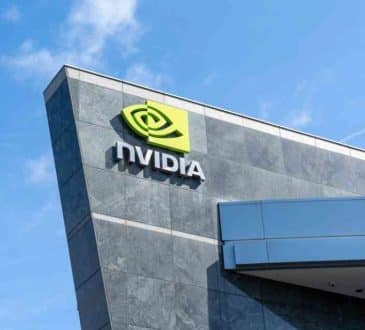The Wealth Gap: How Capitalism Can Be Part of the Solution

Today in America, the upper 2% are getting wealthier while average Americans are being left behind.
What’s the solution?
There are no laws on the books that give elected officials the authority to regulate CEOs’ exorbitant paychecks or workers’ dismal wages. These amounts are set by the boards of directors of companies, and if a board wants to pay a CEO many millions of dollars while agreeing to minimum wages for workers, the government can’t do anything about it.
This is true for companies including Walmart, McDonald’s, Kroger, and many others that pay wages so low—while their CEOs enjoy huge compensation packages—that many full-time employees must enroll in government assistance programs, such as the Supplemental Nutrition Assistance Program (SNAP), formerly known as the Food Stamp Program.
These low-income workers pay more to eat, buy, and borrow than the rich do. Worse, for Black Americans, who disproportionately serve in low-paying jobs and lack access to wealth-building tools, these problems are even more acute.
While Black Americans make up 13.6% of the population, only 5.9% of all chief executives in the country are Black, according to the Bureau of Labor Statistics. Thanks to a racist system and the era of Jim Crow, the wealth gap for Black Americans has been generational. Today, the median Black household has around $24,000 in savings, investments, home equity, or other wealth. In contrast, the median white household has around $189,000.
Bridging the Wealth Gap One Step at a Time
How can we close this gap? What capitalism and politics have created, capitalism can also solve. An increasing number of emerging companies are bridging America’s wealth gap by making basic financial services more affordable and accessible.
SoLo Funds launched in 2018 with a mission to provide a place where working people could borrow and lend money without being victimized by the big banks or, even worse, by shady payday loan companies. Low- and middle-income people often need short-term loans at reasonable interest rates to cover unexpected expenses, and at SoLo Funds, they’re matched with lenders who are willing to take the risk in exchange for interest income.
SoLo Funds is the only Black-led financial services Certified B Corp in the United States and Canada. Its mobile app allows customers to request a cash advance of up to $575 from its community of individual lenders in its loan marketplace. All borrowing is built on trust; customers set their own repayment dates, and all fees are optional. As a result, both sides are happy, and the company is filling a major gap in the market.
OfColor is a Black-owned financial wellness startup on a mission to improve the financial lives of employees of color. The impetus for the company is the racial wealth gap, which has hurt individual families of color, Black businesses, and the economy as a whole.
OfColor blends financial technology, research, and common sense into educational tools that help people of color increase their savings, pay down debt, scale their income, and understand how it’s all connected to the Black identity.
Stackwell Capital is a digital investment platform created to eliminate the racial wealth gap using tools specifically designed to increase Black ownership of financial assets. Stackwell’s mobile app allows the customer to open an account and invest in automated portfolios, which are based on the customer’s risk profile and investment objectives. The portfolios comprise a mix of low-cost equity and fixed-income ETFs (exchange-traded funds).
What You Can Do
These companies, and others I profile in Higher Purpose Venture Capital, serve as proof that if capitalism is embraced as a tool for the common good—and not just a vehicle for personal enrichment without a moral compass—it can bring benefits to everyone. You can get started by researching socially responsible financial services companies. Begin with websites such as Green America, Sustainable Jungle, or even Investopedia, which offer lists of socially responsible financial advisors. You can also go to the B Corp website, which provides lists of Certified B Corp organizations.
By investing in socially responsible, free market companies of all types, you have the potential to earn a higher-than-average return on your investment while also having the satisfaction of knowing that your investment is helping to uplift millions of low- and middle-income families, close the ever-widening wealth gap, and introduce more economic stability into our increasingly volatile society.
Written by Ron Levin.
Have you read?
Ranked: The World’s Most Powerful Countries For 2023.
Ranked: Countries with the highest share of women in parliament.
The World’s Largest Gold Producing Countries, 2023.
Ranked: The World’s Most Influential Countries, 2023.
Ranked: World’s Most Forward-Thinking Countries, 2023.
Add CEOWORLD magazine to your Google News feed.
Follow CEOWORLD magazine headlines on: Google News, LinkedIn, Twitter, and Facebook.
This report/news/ranking/statistics has been prepared only for general guidance on matters of interest and does not constitute professional advice. You should not act upon the information contained in this publication without obtaining specific professional advice. No representation or warranty (express or implied) is given as to the accuracy or completeness of the information contained in this publication, and, to the extent permitted by law, CEOWORLD magazine does not accept or assume any liability, responsibility or duty of care for any consequences of you or anyone else acting, or refraining to act, in reliance on the information contained in this publication or for any decision based on it.
Copyright 2024 The CEOWORLD magazine. All rights reserved. This material (and any extract from it) must not be copied, redistributed or placed on any website, without CEOWORLD magazine' prior written consent. For media queries, please contact: info@ceoworld.biz
SUBSCRIBE NEWSLETTER








